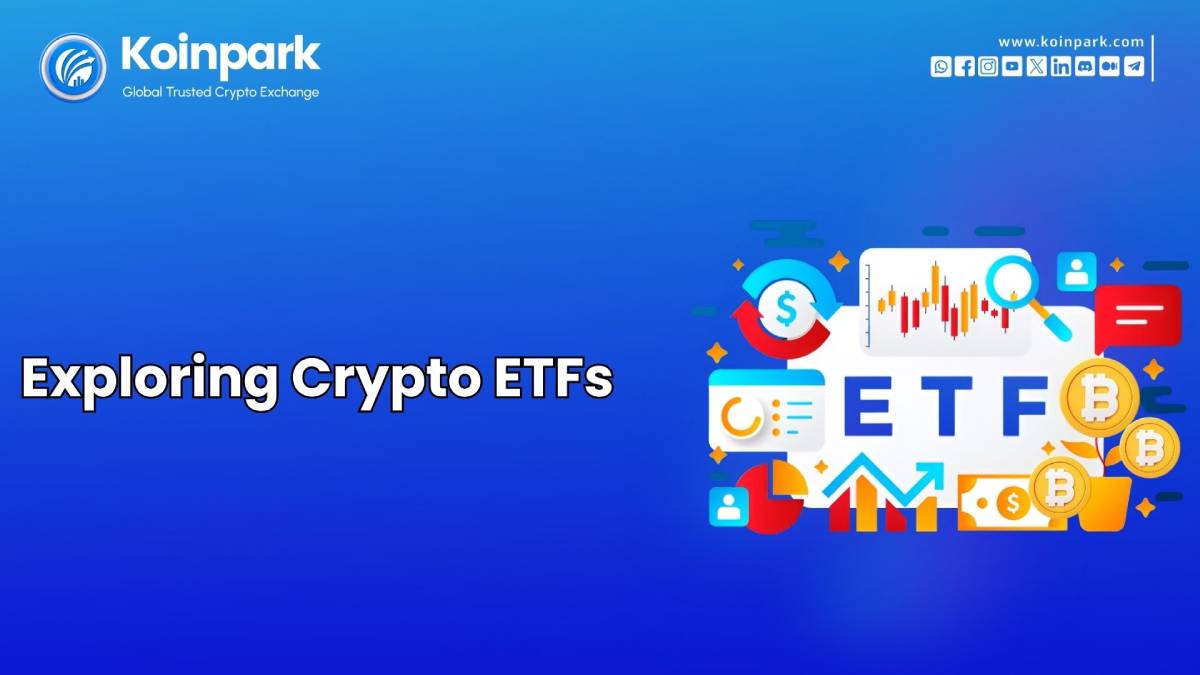Introduction
Crypto ETFs, short for exchange-traded funds, represent a convenient means for investors to track the price movements of one or more global cryptocurrencies. These investment vehicles offer a simplified way to access the crypto market without navigating its technical complexities.
While their popularity is on the rise, it's important to understand their nuances and limitations. Additionally, investors can utilize global cryptocurrency exchange platforms to facilitate trading and investment in these ETFs.
Understanding ETFs
Before delving into crypto ETFs, it's crucial to grasp the concept of ETFs in general. ETFs function as investment funds that enable investors to purchase a diversified basket of assets in one go, similar to buying individual stocks.
Unlike traditional ETFs, which typically track indexes or various assets, crypto ETFs specifically monitor cryptocurrency prices, providing a straightforward route for investors to participate in this market.
This allows investors to easily buy crypto assets through these ETFs, without the need for direct ownership or management market.
Types of Crypto ETFs
Crypto ETFs can be broadly categorized into three main types:
Physically-Backed ETFs: These funds involve investment firms directly purchasing cryptocurrencies. Investors indirectly gain exposure to digital assets through shares in the ETF, mitigating the costs and risks associated with direct ownership. This offers a convenient way for investors to access the crypto market without needing to engage in the complexities of managing digital assets directly or using a specific cryptocurrency exchange app. Additionally, it provides an alternative investment avenue for those looking to convert BTC to INR or other fiat currencies.
Synthetic-Backed ETFs: In contrast, synthetic-backed ETFs track cryptocurrency derivatives such as futures contracts. Rather than holding the actual cryptocurrencies, these ETFs mirror the price movements of these derivatives, allowing investors to speculate on crypto price movements without direct ownership. This approach enables investors to engage in crypto trading without the need for holding the underlying assets, making it suitable for those seeking exposure to the crypto market through traditional investment channels.
Crypto-Adjacent ETFs: This category focuses on investing in companies involved in the cryptocurrency industry. By holding stocks of these firms, these ETFs indirectly gain exposure to the crypto market's growth, offering a diversified investment approach beyond direct cryptocurrency ownership.
Functionality of Crypto ETFs
Crypto ETFs operate similarly to traditional ETFs, traded on stock exchanges and regulated by bodies such as the SEC in the US. Presently, regulatory restrictions in the US only permit synthetic-backed and crypto-adjacent ETFs, although physically backed options are available in other jurisdictions.
In the US, synthetic-backed ETFs often utilize crypto futures contracts to provide market exposure, while some invest in stocks of companies within the crypto industry. This accessibility allows investors to buy your first bitcoin indirectly through ETFs, providing a more straightforward entry point into the cryptocurrency market.
Investment Advantages
Investing in crypto ETFs presents several advantages:
- Diversification: ETFs offer exposure to a diversified portfolio of cryptocurrencies, aiding risk management.
- Accessibility: ETFs provide an easy entry point for newcomers to the crypto market, eliminating the need for complex asset custody procedures.
- Risk Management: Investors are spared the task of managing digital assets directly, reducing associated expenses and risks.
- Market Liquidity: ETFs can enhance market liquidity and foster wider cryptocurrency adoption.
- Trading Flexibility: ETFs can be traded throughout the day on regulated exchanges, offering greater flexibility compared to other investment options.
Conclusion
In conclusion, crypto ETFs offer a regulated and simplified investment avenue for individuals seeking exposure to the cryptocurrency market. They eliminate the need for direct asset management while providing access to market growth. However, investors should assess the risks and benefits carefully, aligning their investment strategies with their financial goals and risk tolerance.





Comments